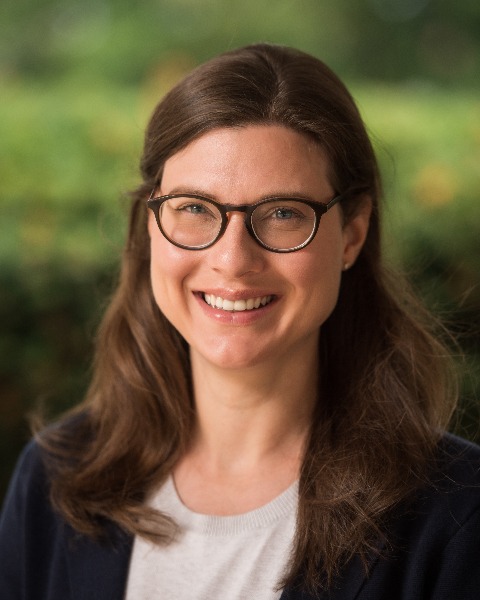Public Health & Prevention
Category: Abstract Submission
Public Health & Prevention I
574 - Youth Experiences and Perceptions of COVID-19 Vaccine Incentive Programs
Saturday, April 23, 2022
3:30 PM - 6:00 PM US MT
Poster Number: 574
Publication Number: 574.240
Publication Number: 574.240
Caroline M. Hogan, University of Michigan Medical School, Ann Arbor, MI, United States; Marika E. Waselewski, University of Michigan Medical School, Ann Arbor, MI, United States; Clara A. Wolff, University of Michigan Medical School, Ann Arbor, MI, United States; Park Szachta, University of Michigan, Clarkston, MI, United States; Xochitl Amaro, University of Michigan, Ann Arbor, Chicago, IL, United States; Tammy Chang, University of Michigan, Ann Arbor, MI, United States

Caroline M. Hogan, MD
Pediatric Health Services Research Fellow
University of Michigan Medical School
Ann Arbor, Michigan, United States
Presenting Author(s)
Background: COVID-19 vaccine incentives have been broadly implemented to encourage vaccine uptake. Many of these programs are targeted to children, who make up nearly a quarter of the U.S. population and thus represent a key demographic in the country’s vaccination campaign. Despite the scope and costs associated with these initiatives, little is known about youths’ views regarding COVID-19 vaccine incentives.
Objective: To assess experiences and perceptions of COVID-19 vaccine incentives among a nationwide sample of U.S. youth.
Design/Methods: In October 2021, five open-ended questions that aimed to assess experiences and perceptions of COVID-19 vaccine incentive programs were posed to 1206 participants in the MyVoice text message cohort, aged 14-24 years. Qualitative responses were analyzed using thematic analysis. Data were summarized using descriptive statistics.
Results: The mean (SD) age of the 1125 respondents (RR = 93.3%) was 20.2 (2.4) years; 59% identified as male; and 68.4% identified as non-Hispanic white. Of respondents, 78.8% reported having heard of vaccine incentives, and 79.2% believed they were a good idea. However, only 7% of youth reported that an incentive influenced their decision to get a COVID-19 vaccine. Incentive types associated with vaccine uptake included lotteries (15.1%), cash payments (13.7%), food and drink incentives (12.3%), free items (11%), event incentives (6.8%), and scholarship prizes (5.5%). Youth whose vaccination decision was not influenced by an incentive reported other motivations, including to avoid getting or spreading COVID-19 (20%), to get back to a “normal,” pre-pandemic existence (2.1%), or to comply with a mandate (2%). Interestingly, when asked what they thought would motivate others to get a COVID-19 vaccine, youth most commonly reported incentives (10.9%); other perceived motivators included additional COVID-19 vaccine research (10.6%), more general education and information-sharing about vaccines (6.7%), experiencing COVID-19-related illness (6.2%), vaccine mandates (5.6%), and social support or pressure to get vaccinated (3.6%).Conclusion(s): COVID-19 vaccine incentives are well-known but not a significant motivator for youth vaccination; however, they are perceived to be motivating to others. More research is needed to better characterize pediatric COVID-19 vaccine incentives and to evaluate the effectiveness of these programs in promoting vaccine uptake. Policymakers and investigators should also weigh the ethical considerations of offering vaccine incentives to children who cannot independently consent to vaccination or participation in incentive programs.
Caroline Hogan CVCaroline Hogan CV.pdf
Objective: To assess experiences and perceptions of COVID-19 vaccine incentives among a nationwide sample of U.S. youth.
Design/Methods: In October 2021, five open-ended questions that aimed to assess experiences and perceptions of COVID-19 vaccine incentive programs were posed to 1206 participants in the MyVoice text message cohort, aged 14-24 years. Qualitative responses were analyzed using thematic analysis. Data were summarized using descriptive statistics.
Results: The mean (SD) age of the 1125 respondents (RR = 93.3%) was 20.2 (2.4) years; 59% identified as male; and 68.4% identified as non-Hispanic white. Of respondents, 78.8% reported having heard of vaccine incentives, and 79.2% believed they were a good idea. However, only 7% of youth reported that an incentive influenced their decision to get a COVID-19 vaccine. Incentive types associated with vaccine uptake included lotteries (15.1%), cash payments (13.7%), food and drink incentives (12.3%), free items (11%), event incentives (6.8%), and scholarship prizes (5.5%). Youth whose vaccination decision was not influenced by an incentive reported other motivations, including to avoid getting or spreading COVID-19 (20%), to get back to a “normal,” pre-pandemic existence (2.1%), or to comply with a mandate (2%). Interestingly, when asked what they thought would motivate others to get a COVID-19 vaccine, youth most commonly reported incentives (10.9%); other perceived motivators included additional COVID-19 vaccine research (10.6%), more general education and information-sharing about vaccines (6.7%), experiencing COVID-19-related illness (6.2%), vaccine mandates (5.6%), and social support or pressure to get vaccinated (3.6%).Conclusion(s): COVID-19 vaccine incentives are well-known but not a significant motivator for youth vaccination; however, they are perceived to be motivating to others. More research is needed to better characterize pediatric COVID-19 vaccine incentives and to evaluate the effectiveness of these programs in promoting vaccine uptake. Policymakers and investigators should also weigh the ethical considerations of offering vaccine incentives to children who cannot independently consent to vaccination or participation in incentive programs.
Caroline Hogan CVCaroline Hogan CV.pdf
